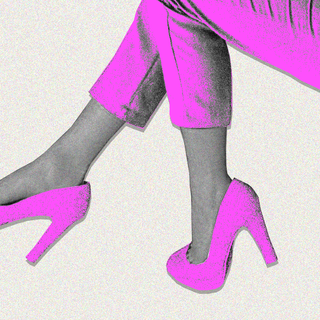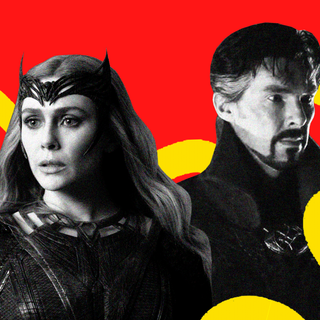
Sports Bra Ad Showing Bare Breasts Banned in UK, Stirring Sex Positivity Debate
The opinion is currently split with some noting the ad celebrates what normal breasts look like, while others find it crass ways to sexualize women.

Women’s unclothed chests — to be accurate, 25 of them — have stirred a controversy not unfamiliar to the internet. At the locus is an advertisement endorsing sports bras using graphic images of breasts varying in skin colors, shapes, and sizes on a poster. The said imagery was part of an Adidas campaign in February; the underlying message was to normalize the variations in women’s breasts’ shapes and sizes. Recently, the U.K. Advertising Standards’ Agency (ASA) banned the ad after receiving 24 complaints; for its gratuitous use of nudity and noting they were “likely to cause harm and offense.“
What both Adidas and ASA agree on is the intention of the ads was to be more representative of women’s bodies; which remains relevant to the product being endorsed.
They diverge on the question of portrayal. Were the bodies objectified or were the depictions sexually explicit, requiring some form of disclaimer?
On one side the ASA expressed vehement objection to and disagreement with “distasteful” images of bare chests. They said: We considered that the depiction of naked breasts was likely to be seen as explicit nudity. We noted the breasts were the main focus in the ads, and there was less emphasis on the bras themselves, which were only referred to in the accompanying text.” Their decision was based on mere 24 complaints; with some calling the ad “inappropriate” and others saying it confused them.
On the other is a camp that views the ad as bold, daring, and necessary in the interest of inclusivity. One user commented on the Instagram post: “Thank you for showing more brown breasts than the average health textbook!” Moreover, a doctor also noted: “As a breast doctor, I think the world needs to know what normal breasts look like. This ad should be celebrated and not banned. It is in no way sexualizing or objectifying women.” As the campaign poster shows, some breasts are small, some saggy, and some scarred. All laid bare to engage with millions of women.
There are some truths we must agree on. Any advertisement for sports bras is bound to ruffle sensibilities for its depiction of breasts. Breasts are not wholly unusual in advertisements; bare chests, in general, have always unsettled a culture that is deeply comfortable with bodily freedom, expression, or autonomy when it comes to women, trans persons, and gender and sexual minorities. This sits at odds with another trend; that ads featuring nipples on men seem to be accepted without a blink of an eye. Men are out there freezing their nipples in the pursuit of endorsing AXE body sprays.
Related on The Swaddle:
Respectfully Disagree: Is Reality TV All Bad?
It’s hard to let Adidas off the hook too. The campaign most definitely feels like a PR marketing trick. What better way to get people talking? Stick a breast on it. Maybe “they are now trying to sell us objectification as if it’s liberation,” as an associate professor of sociology at the University of California at Irvine told the Washington Post. There may be no additional layer of meaning here; the endorsement happening at the expense of a social justice issue will inevitably mean a boost for Adidas’s brand name. The company deserves no more valorizing than is necessary; it executed the “get people talking strategy” and that’s that.
But the ad doesn’t exist in marketing silos. Breast representation is a point of contention for how it shapes individual self-image as well as the continued sexualization, and degradation, of female anatomies. “In a world that prescribes a curated image of the ‘right’ breasts, there’s a lot of boob dissatisfaction. There’s also a great deal of loathing towards our bodies in general,” Harriet Williamson wrote in the Independent. For Williamson, her breasts now defy the “right” aesthetic that Instagram ads may show. “Now they’re unwieldy melons; unwanted bags of sugar to be wrestled and squashed into minimizing bras. They hurt, they get in the way and I have no use for them. The amount of time I’ve wasted Googling reduction surgery doesn’t bear thinking about.”
Adidas’s “boob grid” then, irrespective of what benefits the company derives from it, does trigger a conversation about inclusivity and diversity. Showing just how different breasts can stage an ideological defense against a trend to only show thin, white, and toned models endorse bras in general. There is a hint of honesty and rawness that stops short of reducing women to a body part.
The social argument would also categorize the campaign as a small step against a rigid culture that censors sexuality — only for some. Social media platforms like Instagram have earned backlash about their biased strategy when it comes to nipple regulation; nipples attached to breasts remain much too jarring for the eye and violate sensibilities while men’s chests run free.
A grid of bare breasts does something — if not much — for the sex-positivity movement, boldly fighting for more representation in mainstream culture. As Arwa Mahdawi wrote in February: “Adidas’s ad might be a shameless attention grab, but anything that helps normalize nipples is OK with me.”
The representation defines how women’s bodies are imagined. Mallory Feldman and Kristen Lindquist wrote in Aeon about how bodies become “biocultural artifacts,” telling stories and ideas, adding meaning and taking it away — but wholly and surely, changing how we experience our bodies in the world. “Like many women, we were reared to believe that our bodies were liabilities, things to control and conceal, obstacles on the way to gender equity,” Feldman and Lindquist added. What makes a woman’s body is then not a binary conversation between moral rightness and wrongness. The anatomy is marked in specific ways, factoring in cultural objectification, sexualization, and fetishization from adolescence.
It then matters how these stories of women’s bodies are told, and who they serve.
Saumya Kalia is an Associate Editor at The Swaddle. Her journalism and writing explore issues of social justice, digital sub-cultures, media ecosystem, literature, and memory as they cut across socio-cultural periods. You can reach her at @Saumya_Kalia.
Related


In ‘Multiverse of Madness,’ Grief Lies at the Heart of Horror
